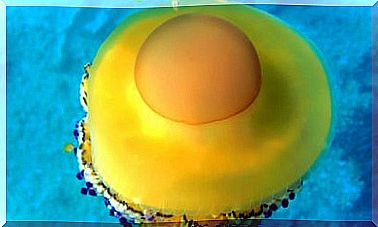Treatment Of Otitis In Cats

Otitis is an inflammation that affects the epithelium that lines the atrium and the entire ear canal. This condition can occur in a very similar way to humans and other pets. Here are the main symptoms, causes and treatment for otitis in cats.
Causes of Otitis in Cats
Otitis can be primary or secondary, depending on its causes and the form of infection.
Often, primary otitis is associated with an infestation by ectoparasites (ticks, fleas, or mites), but inflammation can also be caused by small foreign bodies entering the ear canal.
In general, cats develop primary otitis when in direct contact with other affected animals.
This explains why this condition is more common in kittens that live in shelters or cat colonies.
Along with the above, felines can also have secondary otitis, which appears as a result of trauma or an underlying infection.
This inflammatory process can be caused by fungi, bacteria, yeasts, etc.

Risk factors
Although any cat can develop otitis, this condition is more frequent in immunodeficient animals.
That is, in cats that do not receive adequate preventive care or live in unfavorable conditions. Therefore, stray cats represent a population especially prone to developing otitis.
Keep in mind that the incidence of otitis in our animals increases during summer and spring.
The increase in temperatures and humidity is the gateway to the proliferation of numerous microorganisms and pathogens.
Among the consequences of the action of these microparasites, there is the risk of coming into contact with the so-called ear mites, which are among the main causes of otitis.
On the other hand, puppies born with a congenital problem related to wax production are more vulnerable to otitis.
Furthermore, food or skin allergies can also promote this inflammatory process.
Classification of otitis in cats
Otitis is generally classified according to the region of the ear that is affected by the inflammatory process. These are the three main types of ear infections and their evolution in the feline organism.
- Otitis externa: Inflammation is concentrated in the outer ear and can extend from the pinna to the eardrum. It is the most frequent and with the best prognosis, as they are relatively easy to treat.
- Otitis media: this condition usually arises from the worsening of external otitis, called secondary otitis media. It affects the middle region of the ear canal, when the eardrum has already been affected and inflammation cannot be controlled.
- Internal otitis: this condition may have been generated after some trauma or may have resulted from the worsening of otitis media. Inflammation affects the inner ear, so this condition requires more complex treatment.
How do I know if my cat has ear infections?
Otitis in cats can develop silently and quickly worsen if left untreated.
It is essential to know how to recognize your symptoms as soon as possible and go to the veterinary clinic, to establish a suitable treatment for our pussies.
Below, we summarize the main symptoms of otitis in cats:
- shake your head constantly
- He walks unsteadily, head bowed
- itching
- Hypersensitivity or pain in the ear region
- Red or swollen ears
- Bad smell in the ear region
- Changes in behavior (aggression, isolation, lethargy, etc.)
- hair loss
- Hearing Loss

Treatment of otitis in cats
Although relatively common in dogs and cats, ear infections often cause significant damage to their health.
Affected animals may suffer temporary hearing loss, in addition to experiencing constant and progressive pain. And, in more severe cases, partial or complete hearing loss can become irreversible.
It is essential to take your kitten to the vet quickly if you experience any of the symptoms mentioned above.
The professional will be able to perform the necessary exams to confirm the diagnosis and establish an adequate treatment to the needs of each feline.
In principle, the pathogens that cause inflammation must be eliminated through careful cleaning of the ear canal.
Generally, this procedure will be done at the veterinary clinic, to avoid any injury.
Depending on the animal’s health status and the progress of the ear infections, the veterinarian may administer topical anti-inflammatory drugs. And if the presence of ectoparasites is confirmed, it will also be essential to fight them.









